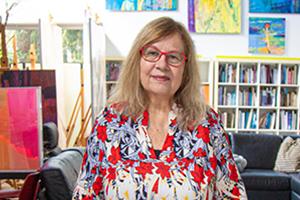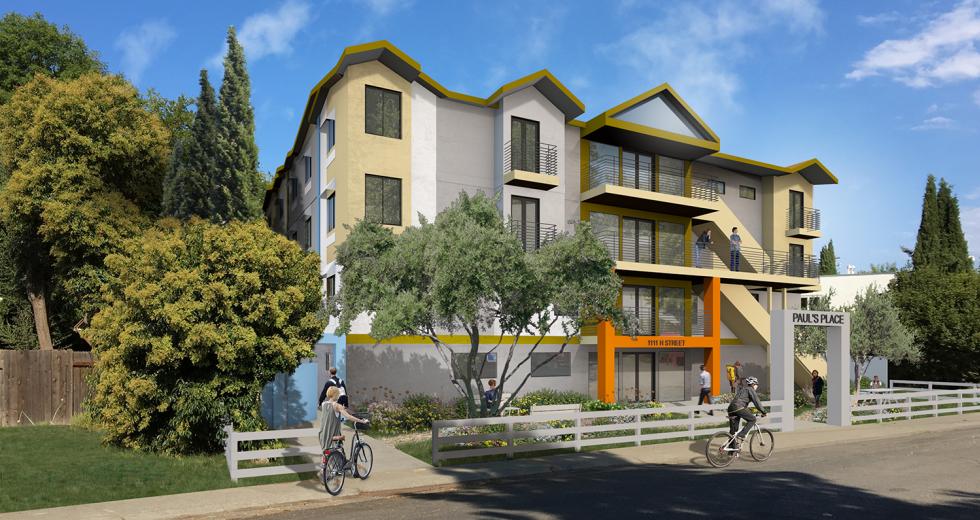With a creative vision, architect Maria Ogrydziak has lent
her skill and talent to Paul’s Place, an innovative project
tackling one of today’s biggest humanitarian crises —
homelessness. “I knew that architecture could help make great
strides toward a solution to homelessness in the city of Davis,”
she says. 
As the designer of Paul’s Place, Ogrydziak gathered input from volunteers who work with the homeless, law enforcement, former Mayor Robb Davis, and Davis Community Meals and Housing executive director Bill Pride, among many others. “Collaboration helped design this building,” she says. “A variety of people were involved in a variety of ways to envision this community project.”
Paul’s Place is more than a building. It’s a warm, welcoming and highly functional village. Breaking ground in 2020, this four-floor collage of tiny houses with on-site support and resources will take the place of the aging single-story DCMH facility formerly at 1111 H Street in Davis.
“Paul’s Place is a community project that we can all be proud of and an example to other cities of what they can achieve for their homeless populations” — Maria Ogrydziak, Architect of Paul’s Place
“I wanted a far departure from an institutional, monolithic look,” says Ogrydziak. “Paul’s Place will be an appealing, positive place that promotes a sense of community, and its structure will also represent the cycle of progress people make from the first through fourth floors.”
The first floor will house an enhanced DCMH resource center with showers, restrooms, laundry facilities and four emergency shelter beds, and the second floor will feature bridge housing — a residence consisting of 10 single-occupancy bedrooms, with shared kitchen, family room, bathrooms and laundry. The third and fourth floors offer permanent supportive housing with 18 300-square-foot private microhomes.
“Davis can set an example with this project,” Ogrydziak says. “This concept can be replicated in other communities, even within big cities like Sacramento because big cities are made up of individual neighborhoods. With people contributing time, money and expertise in a collaborative effort, it’s a viable approach to dealing with a widespread problem.”





